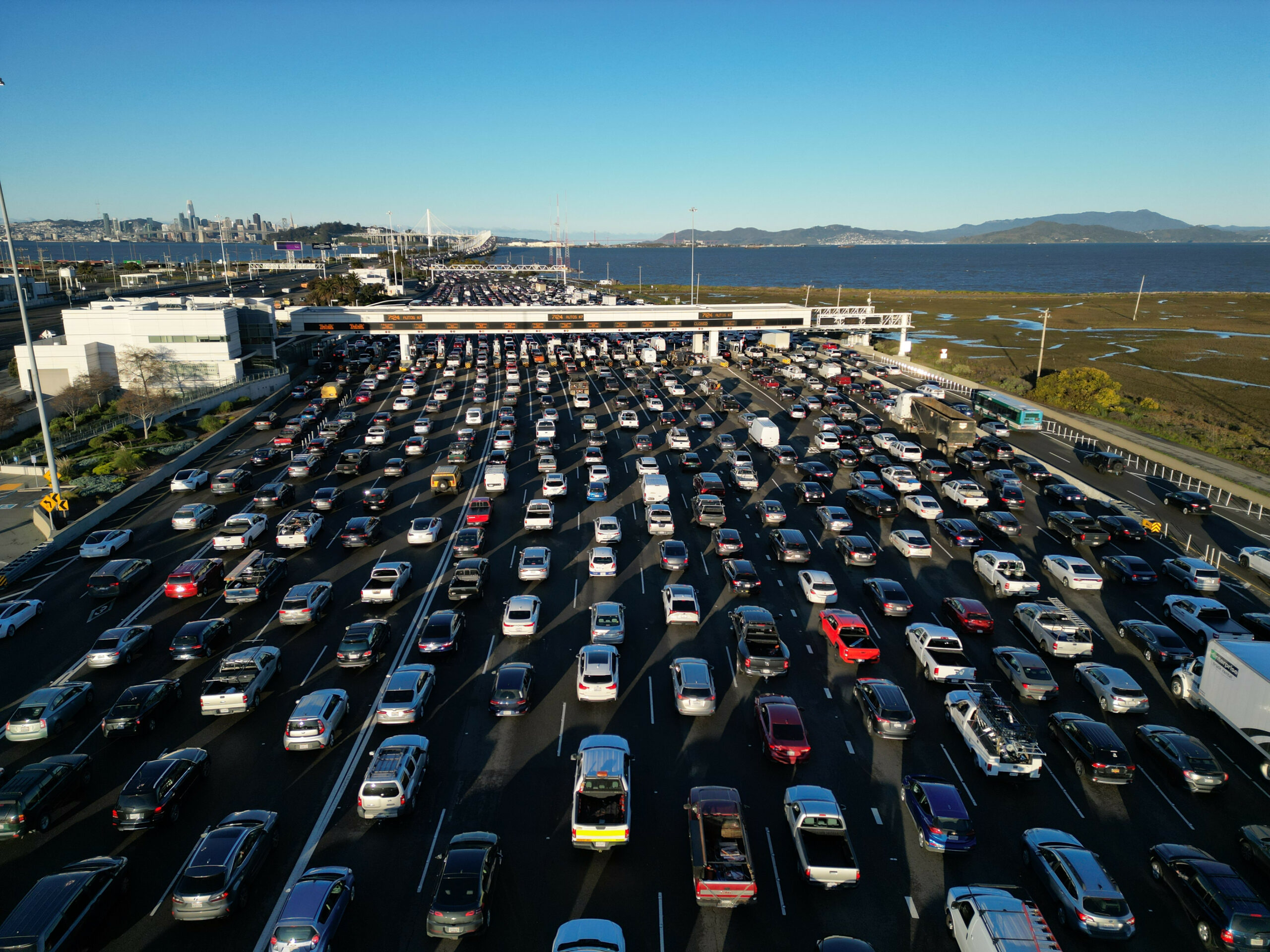The number of people racking up Bay Area bridge toll violations has soared since the system went cashless amid the pandemic in March 2020, according to data obtained by The Standard. Bridge authorities issued about 12.5 million toll violations in the fiscal year ending in June 2023, the data shows, a more than 200% increase over the 2019 total.
Meanwhile, the Metropolitan Transportation Commission, which manages seven of the region’s toll bridges, has plastered billboards along local highways warning that unpaid tolls, which generate violations, can hold up renewing vehicle registration for drivers.
The commission’s finance department has not reported a precise value of the unpaid tolls from the recently ended fiscal year, but a rough estimate, based on the average toll price of $7.50, would place the value north of $90 million, Metropolitan Transportation Commission spokesperson John Goodwin said. Although, that money isn’t necessarily all still outstanding; it trickles in slowly as drivers catch up with their unpaid bills. It’s all part of a paradigm shift in toll collection: Payments that used to be mostly instantaneous can now take weeks, months or even years to reach the agency, Goodwin explained.
“This long lag between when the toll transaction ‘opens’ and when it ‘closes’ makes an apples-to-apples comparison between the current environment (FasTrak, invoice, etc.) and the previous environment (FasTrak or cash) impossible,” Goodwin wrote in an email.
The lengthening delays to receive millions of toll payments hasn’t yet had a significant negative impact on the Metropolitan Transportation Commission’s bottom line, Goodwin said, while also acknowledging that they do present a pressing challenge for the body.
“It is a system that our finance guys are keenly interested in,” Goodwin said.
Meanwhile, advocates have rung alarm bells that express lane and toll violation costs can climb into the thousands of dollars—payments that drivers have to scrape together when they go to renew their vehicle registration, the Mercury News reported.
The Bay Area Toll Authority paused sending unpaid violation notices to the Department of Motor Vehicles, where they would hold up vehicle registrations, in December 2020, Goodwin said. But that pause is set to end later this fall when the agency plans to send its backlog of hundreds of thousands of unpaid violations to the DMV, he added.
Last month, the toll agency launched a payment plan program for people whose household income is no more than 200% of the federal poverty level, about $60,000 for a family of four, which will waive violation penalties. It’s also offering a one-time violation penalty waiver for all customers, regardless of income, available through September 2024.
The Metropolitan Transportation Commission manages toll collection on the Bay Bridge, the San Mateo Bridge, the Dumbarton Bridge, the Carquinez Bridge, the Benicia-Martinez Bridge, the Antioch Bridge and the Richmond Bridge. The Golden Gate Bridge is run by a separate entity and is not included in the data reviewed by The Standard.
A New Cashless System
In the fiscal year ending in June 2019, before the pandemic, about 4.6 million bridge crossings ended in a toll violation. At that time, drivers received violations if they blew through the cash lane without paying the toll collector or drove through the FasTrak lane without a valid FasTrak transponder, Goodwin said.
But in March 2020, as Covid bore down on the nation, officials suspended cash payments at toll booths, instead opting for a system that would automatically log the information of drivers without FasTrak transponders and send them a bill in the mail. That system eventually became permanent, and now, drivers receive a violation if they don’t pay the toll invoice they receive in the mail on time.
The number of toll violations more than doubled in the first full year of the cashless system, rising to 9.8 million in the year ending in June 2021. The ascent continued from there, climbing to 10.5 million in 2022 and landing at 12.5 million in 2023.
That 2023 violation total counted for a full 10% of the roughly 125 million vehicle crossings of the seven state-run Bay Area bridges, more than triple the 3% violation rate in the 2019 fiscal year, when there were about 143 million crossings.
The highest rate of toll violations was logged by residents of communities with a significant number of people who have low incomes, according to a December 2022 presentation by the Bay Area Toll Authority.
The Bay Bridge has by far the largest amount of traffic of the seven state-run bridges that the transit authority operates; about 42.8 million vehicles passed through its toll gates in the year ending in June 2023, the data shows. About 10% of those drivers received a toll violation.
But it’s the Carquinez Bridge, the portal to Vallejo, that has the largest share of drivers that rack up violations. On that bridge, nearly 14% of the 20.5 million vehicles that crossed during that period ended up logging a violation.
The Bay Area Toll Authority dramatically reduced the penalty for toll violations in December 2021, dropping the first notice fee from $25 to $5 and the second notice from $70 to $15.
